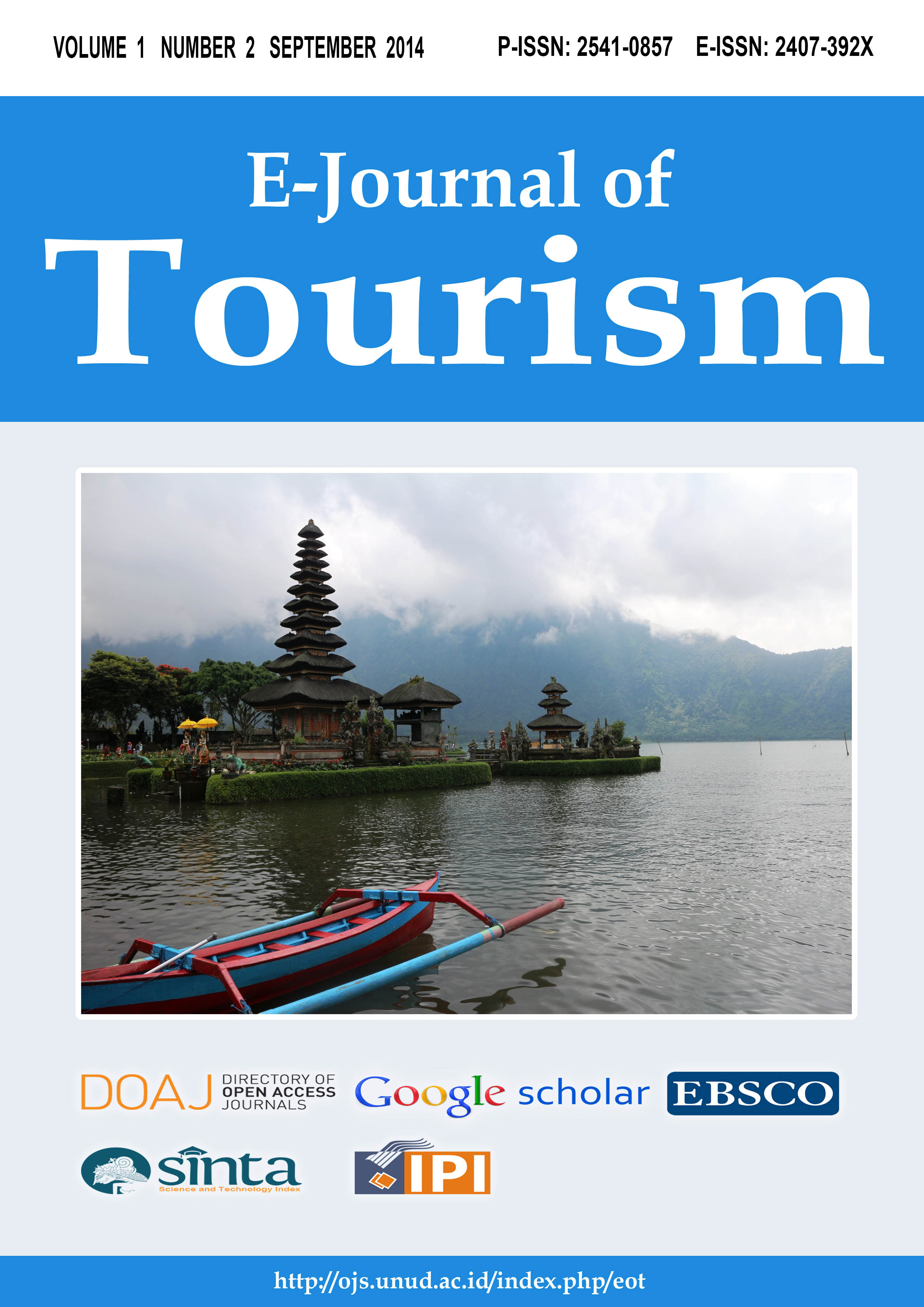Museums as Cultural Tourism Attractions in Ubud
Abstract
Recently, there has been a shift in the attributes of several museums in Ubud in order to attract more tourists to visit museums as cultural tourism attractions. Some museums have expanded their collections and add other attributes to complement their main collections, which as the potential to alter the idealism, functions, and roles of museums. Another challenge faced by museum operators is the development of other tourist attractions, such as the addition of tourism destination attributes in Ubud, which was initially known as tourism destinations that offered art and culture such as dance performances and museums, and now have expanded into yoga destination, adventure destination, and so on. Based on these factors, the problem statements in this research are formulated as follows: (1) How are museums as tourist attractions in Ubud area, from the perspective of operators? (2) How are museums as tourist attractions in Ubud area, from the perspective of visitors? (3) How is the relationship between museums and other tourism components when examined from the role of museums as cultural tourism attractions in Ubud area?. This research on museums was conducted in the Ubud area because Ubud has made museums as the cultural tourism attractions in the area, which include the Blanco Museum, Museum Puri Lukisan, Agung Rai Museum of Art (ARMA), the Rudana Museum, and Neka Art Museum. This research is based on the theories of museum management, marketing, and theories on cultural tourism attraction. The research involved the participation of 82 foreign visitors and 79 domestic visitors as respondents, in addition to five museum owners and two museum professionals as informants. The conclusion of this research are as follows: (1) From the perspective of museum operators, museums function as cultural tourism attractions, as sources of historical information, as the media for cultural preservation, and the actualization of the noble objective of the museum founders, which is to take the role as preservers of culture particularly in the form of paintings and sculptures. (2) Museums as cultural tourism attractions, according to visitors to the Ubud area, have been well managed and in accordance to the visitors’ expectations. The perception of visitors on cultural tourism attractions in this research is observed from the elements of museum architecture, collections, layout, service quality, cleanliness, beauty, and hospitality, which indicates that all eight factors have been satisfactory, for both foreign and domestic tourists visiting the Ubud museums. (3) The museums have been able to sustain and improve the image of Ubud as a
Downloads
Keywords

This work is licensed under a Creative Commons Attribution 4.0 International License.
The copyright of the received article shall be assigned to the journal as the publisher of the journal. The intended copyright includes the right to publish the article in various forms (including reprints). The journal maintains the publishing rights to the published articles.




















